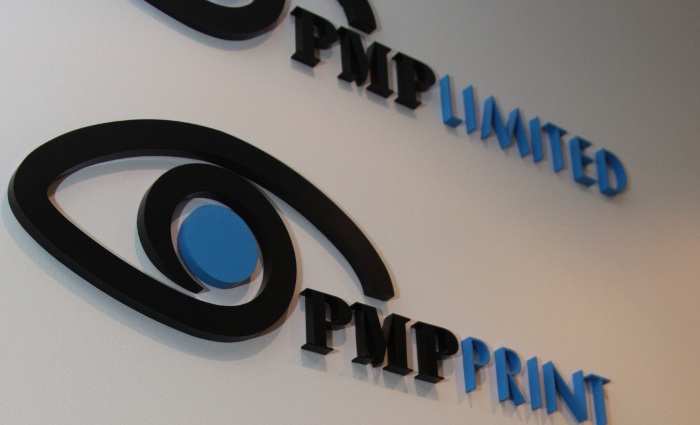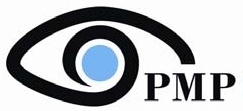
Alongside naming former IPMG boss Kevin Slaven as its CEO, PMP has experienced a net loss after tax and significant items of $19.5m in the last half year despite a rise in earnings and revenue after its merger with IPMG last year.
The company’s earnings before interest, tax, depreciation and amortization (EBITDA) before significant items being $20.2m, up 82.3 per cent on the prior corresponding period (pcp). Sales revenue was $398.5m, up 52 per cent from $262.2m in the pcp. PMP’s net debt is at $32.8m, in line with the company’s full year guidance and higher than Net Debt of $18.5m at the end of June.
Kevin Slaven has been acting as interim CEO since former boss Peter George retired in December. The company says Slaven has extensive experience and a strong understanding of how to manage a large scale print and marketing business having previously been both CFO and CEO of IPMG. His appointment is effective immediately.
Slaven says, “Whilst sales are significantly higher than in the pcp, this is because of the inclusion of IPMG Print and Marketing Services revenue, partially offset by lower sales at PMP NZ and Distribution. H1FY18 EBITDA (before significant items) of $20.2m is $4m lower than guidance given in November. This was primarily due to a weaker than expected second quarter in Print Australia, with all other businesses performing to H1 expectations. Whilst the overall heatset print volumes in Australia were slightly ahead of guidance given in November, this was offset by lower than expected average prices due to a change in work mix mainly in the publishing/newspaper sector and some minor cost-out timing variances.”
“Whilst the average sell prices at Print Australia are lower than expected, this does not represent a further reduction in prices to heatset customers but rather since November, magazine and newspaper publishers have reduced paginations and quantities in their forward bookings. For the tier one retail catalogue customers, encouragingly we are seeing stability in pricing and increased volumes for a number of customers. This has helped to mitigate the impact of the reduced volumes from publishers. It should also be noted that we have been successful in securing some small format work at higher prices. The Board and Management are not satisfied with this result and are working hard to ensure we improve the underlying Print Australia results.”
Print Australia generated sales revenue for the half year of $244.7m, an increase of 117.9 per cent of what it made in the pcp, $112.3m. PMP says the result included $134.3M higher heatset sales from the inclusion of six months of IPMG print revenues and $1.9M lower sales at Griffin Press. When including the IPMG print business on a comparable basis, and for H1FY18 tonnes are 135,500, from 158,000 tonnes in H1FY17, making for a 14 per cent reduction year on year. On a statutory basis however, heatset print volumes were up 105 per cent or 69.3K tonnes on the pcp.
Print Australia’s EBITDA was $9.5m, up from $2.4m in the pcp, which the company says is due to the impact of higher volumes from IPMG heatset print and synergy savings more than offsetting lower than expected sell prices/mix and higher direct labour costs at Print Australia. PMP says Griffin Press was impacted by lower volumes after customer losses which more than offset operational efficiencies and EBITDA (before significant items) was $0.7M lower than in the pcp.
The distribution sector of the business produced a sales revenue of $46.2m, down $1.1m or 2.3 per cent, which PMP says is due to new business wins being offset by lower volumes from existing customers and customers not being re-signed. Volumes in H1FY18 were 1.3 per cent lower on the pcp. PMP delivered 3.56 billion catalogues in the last 6 months, a figure that is down 4.1 per cent on the pcp. Distribution EBITDA (before significant items) were $2.6m, 13.2 per cent or $0.4m lower than the pcp, with the company citing operational and administration savings being offset by lower volumes and sell prices in a competitive environment.
On Slaven’s appointment, Matthew Bickford Smith, chairman for PMP says, “We are pleased that the company has been able to retain the extensive skills and experience that Kevin brings to the role. The Board has every confidence in Kevin’s understanding of the opportunities and challenges that exist for our company and industry, and his commitment to improve the company’s profitability.”
[Related: Shares plunge on PMP downgrade forecast]
Slaven says, “Since my appointment as Interim CEO in December, I have undertaken an extensive review of each of the operations across Australia which has given me the opportunity to obtain a deeper appreciation of what is required to move the business forward and ultimately achieve a better outcome for all stakeholders. In light of our recent guidance to the market, we remain focused on the print business’ cost base and will continue to adjust this to reflect market changes in mix and volumes.
“With the restructuring that has been undertaken over the last year, I am confident that we are in a strong position to continue to demonstrate our market leadership. The combined offer we have through our print, digital, distribution and marketing services businesses opens up new opportunities to deliver effective and efficient integrated marketing campaigns for our customers.”
“Whilst overall Australian print volumes are in line with what has previously underpinned guidance, and noting that all cost initiatives are largely being met, the revised guidance given on 14 February 2018 was driven mainly by a reduction in expected volumes of higher margin magazines and newspapers (offset by higher than expected volumes of lower margin catalogues).”
The company’s forecasted results for the full year have also dropped, with it predicting an EBITDA of $40-$45m, down from its previous estimate of $50m-$55m. PMP says the $10m reduction is offset by $5m favourable outcomes in working capital, capital expenditure and significant items. PMP also expects its net debt to be around $35m-$40m, down from its prior guidance of $30m-$35m. The company says that it will continue to face challenging print industry market conditions in the second half, with difficult market conditions in newspaper, magazine publishing and retail.
Comment below to have your say on this story.
If you have a news story or tip-off, get in touch at editorial@sprinter.com.au.
Sign up to the Sprinter newsletter


